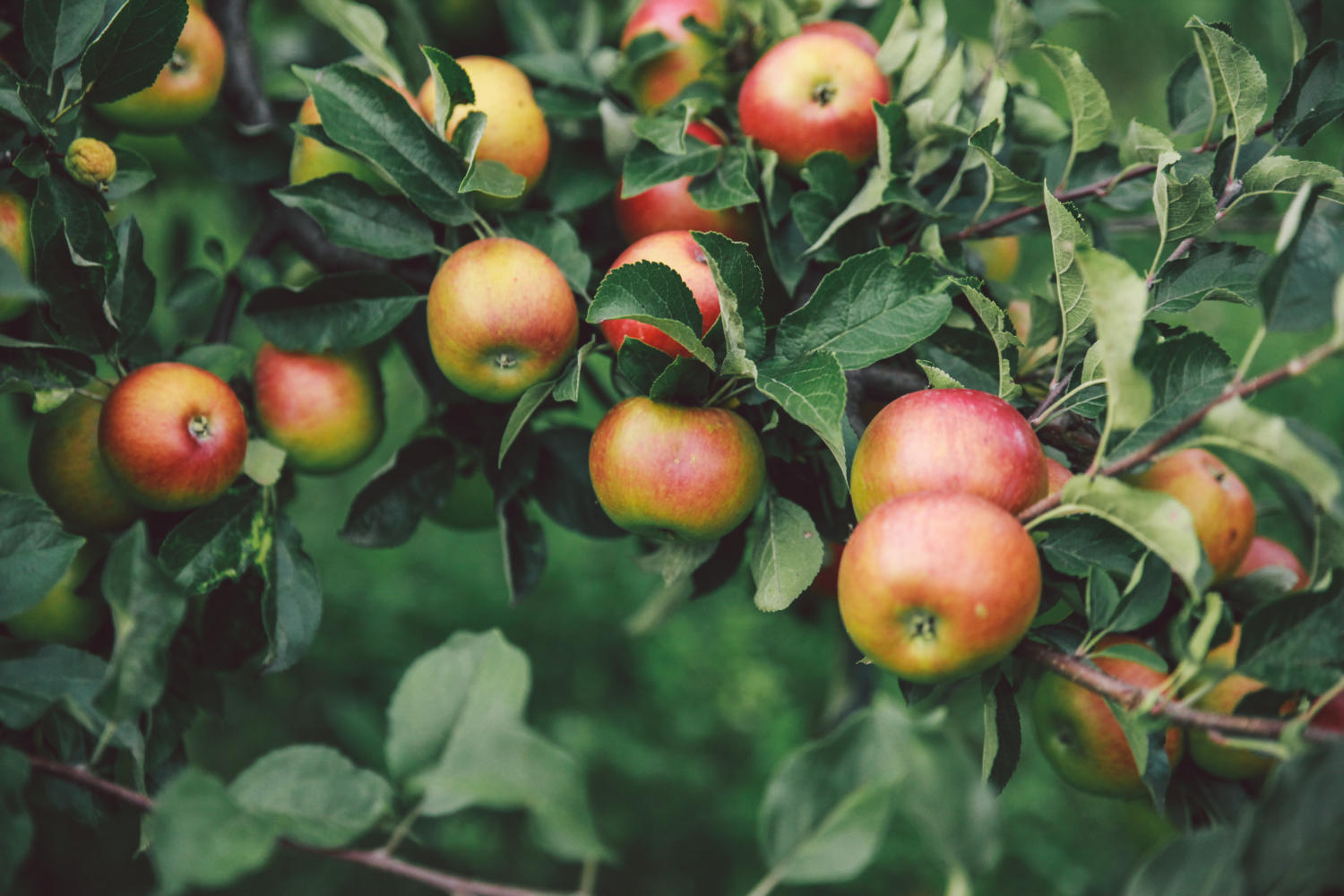BY GARDENING EXPERT Tony Chalcraft
As summer slips into autumn, Keats’s “season of mist and mellow fruitfulness” is almost upon us. This year has certainly been fruitful. The warm and almost frost-free spring has delivered an abundant harvest of ‘top fruit’ – that’s horticultural speak for tree fruit, especially apples and pears. With peak picking time approaching, it seems opportune to look at how to get the best from the season’s bounty of top fruit, focusing on apples!
The number one rule of apple picking is to only take fruit from the tree when it’s ready; people frequently claim their trees only produce hard, sour, unappetising or inedible fruit, which is often because the apples are picked far too soon. An apple is fit for picking when it comes away from the branch into a cupped hand, after being given the gentlest of twists. If it must be tugged or yanked, it is not ready! Apples forced off the tree never ripen properly or develop full flavour. Do not be deceived by the first windfalls. Apples that drop early are usually those that have been damaged, often by the codling moth maggot. It’s also important to remember that not all fruit on the tree will be ready at the same time. Apples that receive more sunlight, such as those on the south side or top of a tree, can be pickable several weeks before those on the shaded north aspect, or deep under the leaf canopy.
While not a substitute for trying fruit on the tree, knowing the variety of an apple can be a useful indicator of when it’s likely to be ready: some varieties, like the well-known Discovery, can be fit for harvest as early as mid-August, while other late-keepers, such as the delicious Ashmead Kernel, usually need to remain on the branch until late October. Books and websites can provide guidance, but also keep in mind other factors, such as seasonal variations. A warm and sunny summer generally leads to earlier maturing apples than a cool or wet one.
Another key point to remember is that most apples are not ripe and ready to eat when picked. Only the early season varieties (those maturing in August and early September, such as Discovery) will be palatable when picked. Most others, including all but the earliest cooking apples, have distinct picking and eating times. In the case of the long-keeping types, the picking and eating periods can be months apart. For example, a few of my late-maturing varieties are best not picked until the first days of November, and not eaten or cooked until February or later.
This brings us to how best to store longer-keeping apples for use in autumn and winter. Apples will not store at room temperature – a shed or other outbuilding is essential. This must be dry, cool but frost-free, and secure from rodents, squirrels, and other creatures keen to share the harvest. Ideally, it will also be dark, sited and constructed to avoid temperature fluctuations, which can cause rot-inducing condensation. In any store, apples are best placed single-layered, in shallow trays or boxes, stalk upwards. There is no need to wrap individual fruit in paper. Be sure to keep only undamaged fruit. Occasional inspection, to remove any rotting fruit, is advisable. Apples will continue to slowly ripen in store through the autumn and winter, in approximate order of harvesting…










Add a comment